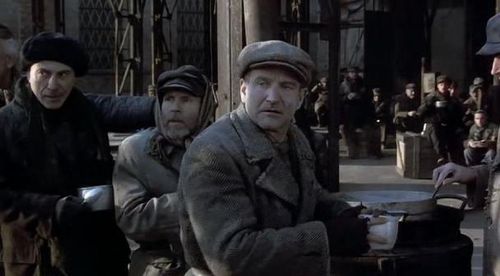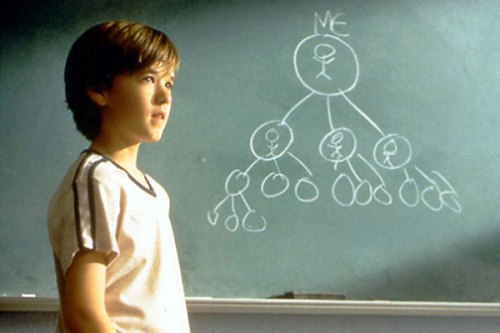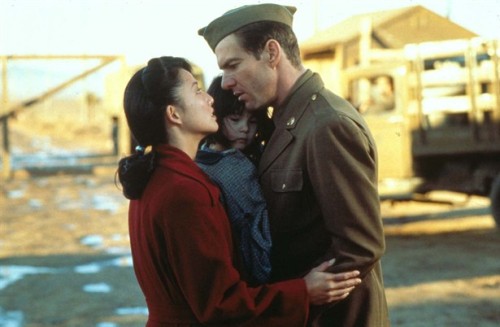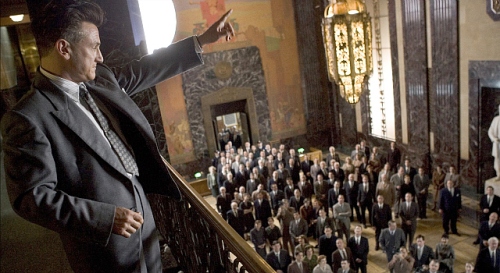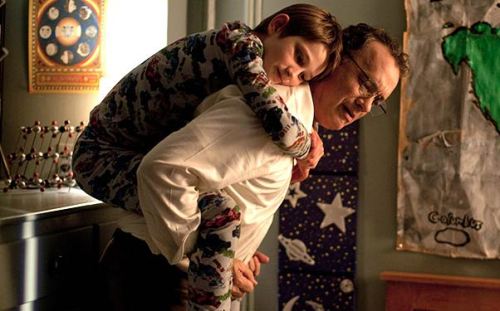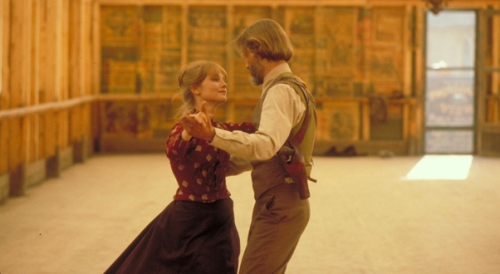Biblical epics have been a difficult thing to make lately in Hollywood for a variety of reasons. One, they are incredibly expensive productions and two, anything related to scripture on the big screen is going to rile people up no matter what. Once the go to source for big Hollywood spectacles, the Bible has since been ignored by the industry, presumably because they want to reach a wider and more diverse audience that includes people of all faiths. But, at the same time, those classic biblical epics of the Hollywood’s Golden Age are looked at favorably as an example of grand scale film-making, which seems to be absent nowadays. Epics still exist, but they’ve been secularized and stripped down of their glossy Hollywood sheen. Movies like Gladiator (2000) and Braveheart (1995) defined the modern epic with grit and realism, while The Lord of the Rings trilogy brought back some of that old-school wonderment, but took it into the world of fantasy. It wasn’t until Mel Gibson’s The Passion of the Christ (2004) that we saw a return to an earnest, deeply religious adaptation of biblical passages, in particular, the crucifixion of Jesus. But, even with The Passion‘s unprecedented success, Hollywood still was reluctant to step on any toes, which Mr. Gibson’s film almost certainly did. Christian groups have attempted to make faith-based films outside of the system, but it isn’t until now that we’ve seen an actual earnest attempt at a grand-scale biblical epic, albeit with a modern twist to it, like we do with Noah (2014).
Created by director Darren Aronofsky, Noah takes on the old testament story of the man who saved all the creatures of the world as God’s wrath wipes the slate clean on Earth after mankind had spoiled his creation. I won’t go into too much detail of the plot, since I’m sure most of you have read the book already. We’ve seen the story of Noah adapted many times, but never with this kind of emphasis and scale. The last cinematic attempt that I can recall of the story of Noah’s Ark is from a segment of director John Huston’s failed epic production of The Bible (1966), where Mr. Huston himself took on the role of Noah. And that was only a 30-minute segment in a larger film. Here, the tale is embellished in order to bring it to epic length, in ways that may test the audience’s acceptability rate in different ways. Truth be told, it is unusual for a director of Aronofsky’s caliber to take on a story that so deeply rooted in religious faith. Even more amazing, is that Aronofsky actually pulls off the tricky balancing act of showing respect to the source material, while at the same time making a movie that feels right in line with the rest of his filmography. There’s no mistaking this as a movie from the same guy who crafted a psychological thriller centered around ballet. Noah does exactly what it needs to do, which is be a solid expression of a filmmaker’s trademark style as well as be an earnest adaptation of a biblical parable that stays true to the spirit of it’s message. And while it is flawed in many ways, it is certainly something that shouldn’t be ignored or dismissed either.
So, is this a movie that is going to please people of all faiths or is it going to drive an even bigger wedge between believers and non-believers? Well, it’s primarily going to come down to how well you respond to Aronofsky’s style in this movie. In particular, there is going to be some controversy surrounding some of the additions that the director has worked into the story-line. But, at the same time, you can’t blame Aronofsky for adding new things into the plot, because the original biblical passage is very brief and can’t support a two hour run-time on it’s own. However, the additions here exist more in the realm of Aronofsky’s imagination and less in the realm of reality or biblical interpretation. We get the basic central figures of Noah (Russell Crowe), his wife Naameh (Jennifer Connelly), and their sons Shem (Douglas Booth), Ham (Logan Lerman), and Japheth (Leo McHugh Carroll), along with an adopted daughter named Ila (Emma Watson), as well as the iconic ark and the many creatures within. What the film adds to the story is an encounter with Noah’s mystical grandfather Methuselah (Anthony Hopkins), a showdown with a vengeful tribal king named Tubal-cain (Ray Winstone), as well as the inclusion of fallen angels known as the Watchers. And it’s the point where the Watchers enter the movie that will really break down how well people respond to the movie. The Watcher’s are CGI-animated rock monsters that feel like they’ve stumbled into this world out of some other fantasy realm like Middle Earth. They are a really bizarre addition to this movie, and one that I’m sure will turn off a lot of people; but for me, I found it kind of awesome.
And that’s generally how I responded to the movie as a whole. When the Aronofsky style was on full display in this movie, I was actually genuinely entertained. And when the movie started to play it safe and stick more closely to a traditional narrative, it started to drag. The Watchers, while still a very out-there idea on the director’s part, actually does make the movie more interesting, and gives it a more unique feel. Oddly enough, after doing some reading online, the Watchers actually are present in biblical text (primarily the Dead Sea Scrolls translation), so I credit Aronofsky for actually taking a minor concept from elsewhere and running with it. What I like best about this movie is the fact that it feels unlike any other Biblical film to date; it is entirely it’s own thing. The movie is definitely a showcase for the cinematic styling of it’s maker, but at the same time, Aronofsky does remain respectful to the source. He doesn’t try to secularize the story by any means, and there is definitely a religiosity to it’s whole message. Although it may be based in Judeo-Christian theology, the film does manage to have something of a universal relevance to people of all cultures, primarily when it comes to respecting the environment and recognizing the corruption in mankind. And I do credit Aronofsky for not shying away from some of the religious themes present, and for not trying to force them upon the audience either.
Hollywood’s reluctance to address issues of faith in a meaningful way in movies is a problem that I wish they would confront more often. For the most part, I believe that the studios and not the filmmakers are the ones that have put a stop to religious discussions, mainly because they don’t want to court the controversy. But, I think it actually helps to diffuse religious tensions in the world by having movies that aren’t afraid to address issues centered around God and faith, as well as having sympathetic characters who are religious. And I don’t mean movies that are completely funded by Church organizations, which usually tend to forget the necessities of storytelling and just turn into propaganda in the end. I think one of the best examples of a modern religious themed movie done right is the Ang Lee movie Life of Pi (2012), where the main character’s personality was driven by a curiosity about religion. Movies like Life of Pi and Noah both show that you can center religion around a movie’s story-line in a positive way and still be regarded as a universally respectable film. It does make sense in the end that Aronofsky would find a biblical story appealing to his tastes as a filmmaker. One of his first movies, called simply Pi (1998), was all about Jewish mysticism and Rabbinical philosophy, which shows that the director has always had a fascination with deeper religious themes. That was also expressed in his deeply flawed take on New Age philosophy with The Fountain (2006). Noah is a bit more traditionally Hollywood than Aronofsky’s earlier work, but it does show a good progression of the filmmaker’s line of thinking.
Unfortunately, the movie does have it’s pitfalls as well, and it primarily has to do with the moments when the movie plays it safe. The inclusion of a tradition antagonist into the story with Tubal-cain makes the film feel less original at times. A final show down with him and Noah towards the end of the movie has no purpose being there other than to give the movie a climax; as if the flood itself wasn’t enough. Ray Winstone does what he can with the character, but Tubal-cain is still a stock villain that leaves little impression and is quickly forgotten once he’s been subdued. And his presence runs contradictory to what could have been the better idea of having Noah himself be the antagonist. Late in the movie, Noah is confident that he has fulfilled God’s plan to have all the creatures of the earth saved while humanity is wiped out, given that his family will never produce any offspring. This notion is challenged once his adopted daughter Ila becomes pregnant. Noah, wishing to fulfill his dedication to God resolves to kill the child once it’s born in order to secure the destruction of humanity, which makes him a threat to his own family. This could have been a very interesting angle to take in the film, and it also has the added subtext of exploring religious zealotry in the movie. But, again, Aronofsky looses some of that tension by playing it safe and giving the movie a traditional baddie, so that we can keep Noah from looking too much like a bad guy. That’s why the film looses steam in it’s third act and ultimately leads to a rather unsatisfactory resolution.
The third act issues are problematic, especially considering how well everything else works up to that point. The movie is beautifully constructed from beginning to end, and presents a biblical story in a way that you’ve never seen done before. The movie definitely is a far cry from the glossy Biblical epics of Hollywood’s Golden Age. The style here is more Old Testament meets The Road (2009). The aforementioned Watchers also lend to the very off-kilter style of the film, but they are still a welcome addition, at least in my eyes. Their final stand to protect the Ark from Tubal-cain’s army is a particularly exciting, and really insane action sequence; as is the flood, which is grand-scale spectacle at it’s best. And while some of Aronofsky’s additions have little to no basis in scripture, no one can doubt that the Ark itself is probably the most accurate put on screen to date. Very different from the traditional boat shape that we’ve all been familiar with, this Ark feels much truer to the description that is found in the Bible, accurate dimensions and all. Also, the way they house the animals inside and keep them civil is also cleverly explained in the movie. The Ark also looks iconic, and will certainly be one of the best images take away from the movie. The scene where the animals migrate to the Ark will particularly leave audiences with a sense of wonder when they watch the movie. Overall, the movie achieves the epic grandeur that it hopes to accomplish.
The performances are also strong as well, which is typical of Darren Aronofsky’s movies. If there is one thing that Aronofsky’s films have in common it’s that he always gets awards quality performances out of his actors, like Natalie Portman in Black Swan (2010) and Mickey Rourke in The Wrestler (2008), and the cast of Noah is just the same. Russell Crowe gives probably his most dynamic performance since his Oscar-winning turn in Gladiator. His Noah could have gone wrong in many ways if not handled carefully, and Crowe manages to balance the tender moments of the character well alongside the more intense moments. Jennifer Connelly, once again cast alongside Russell Crowe as his wife like she was in A Beautiful Mind (2001), gives a nice subdued performance that compliments Crowe’s Noah perfectly. Emma Watson continues to show much more maturity as an actor in her post-Harry Potter career, and she probably gives the movie it’s most nuanced performance in the character of Ila. Also of note is Anthony Hopkin’s presence as Methusaleh, who has a nice little character quirk about wanting to eat berries that helps to give the movie some much needed levity. Overall, the cast is used to great effect, and they ground the movie in a way that helps to make the messages resonate well beyond their scriptural source.
In the end, I would recommend the movie for anyone that wants to see a spiritual story told with a lot of substance. It’s heart is in the right place, and it smartly avoid being preachy in every way. Overall, I commend Darren Aronofsky for taking up a Biblical retelling at a time when people are more reluctant to do so. Whether you are religious or not, you can’t doubt that there are interesting stories worth telling from the Bible, and Aronofsky has shown us that it can still be done. He’s faithful, while at the same time taking interesting risks. In fact, the movie only falls apart when it starts to play it safe; not necessarily when it comes to the scriptural source, but when it comes to old Hollywood cliches. Noah can be very oddball at times, but I think that audiences will find the messages lying underneath worthwhile. The movie works on many levels; it’s grand when it needs to be epic, it’s bizarre when it needs to feel unique, and when it does present it’s biblical lessons, it is thought provoking. I doubt this movie will make anyone want to convert to any religion, but hopefully it will make some people want to take it’s lessons to heart. I certainly am pleased that I saw it in the end. In the great tradition of artists who have used the Bible for inspiration, like Michaelangelo and his Sistene Chapel frescos, Darren Aronofsky has created something unique and worthwhile that stands well against his own body of work as well as in the company of great biblical epics from the past.
Rating: 8/10






